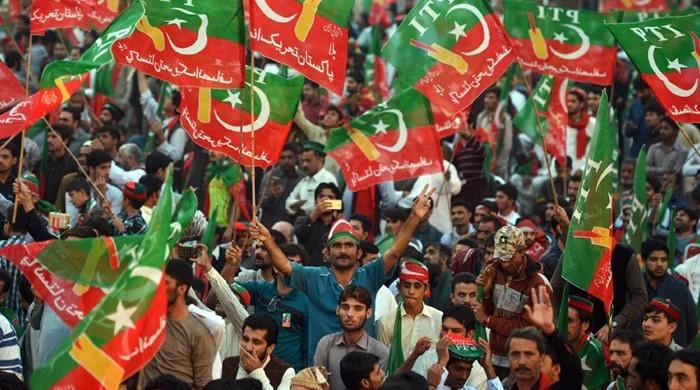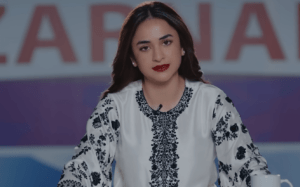The seemingly endless political battle within Pakistan between the government and the Pakistan Tehreek-e-Insaf (PTI), read Imran Khan, appears to have entered a lull, though not a complete ceasefire. There has been a delay in the announcement of likely convictions in some cases, including the £190m Al-Qadir Trust case against Imran Khan. However, raids and intimidation of PTI supporters continue and controversial military courts have quickly handed down dozens of convictions.
So, for now, between the government and the PTI there is the Maoist saying: da da tan tan: fight, fight, talk, talk.
The government that had tried to ban the PTI now emphasizes the importance of dialogue. Meanwhile, PTI leaders have also given up their earlier “all or nothing” approach. It no longer demands the “immediate return of the mandate” nor does it give unrealistic deadlines to the government to comply with the PTI’s demands. And, above all, the PTI has started a dialogue with the government and not with the “true powers”, as it previously insisted.
Dialogue is a consequence of multiple factors. After both sides adopted maximalist positions to eliminate the other, they now know that a zero-sum outcome is not possible for either side. The government has deployed all available powers at its disposal, often going outside the constitutionally established legal parameters. It has impeded the street power of the PTI, but it has failed to weaken public support for Imran Khan, who is the only one with public support for the PTI. Imran Khan has refused, despite multiple pressures, a safe exit from prison.
Added to this is the avalanche of tweets from the side of the president-elect of the United States, Trump, which should probably influence the policy of the establishment-led government on the dialogue with the PTI. Richard Grenell, Trump’s longtime foreign policy adviser who will now take over as Trump’s special mission envoy, regularly posts tweets saying “Free Imran Khan.”
Similarly, the “thinking heads” within the PTI also realize that a complete victory against the establishment-backed government is not possible. PTI’s call for street protest, including the “final call”, may have cost the party at least 12 political martyrs, but there is no chance of PTI’s street power against the state. Interestingly, the active participation of the PTI as parliamentarians and as the KP government in the very post-election system it seeks to conclude also weakens to some extent the logic of fighting fiercely against the government.
Fortunately, the fight, fight, talk, talk approach has been consistently adopted by both major parties in this nearly two-year political confrontation. Consequently, whatever the public demonstration, through words and actions, anger and confrontation, several informal channels of communication between the PTI and the establishment/government have remained active. Perhaps the establishment’s main channel of communication with the PTI has remained intact as Home Minister Mohsin Naqvi and the KP chief minister led the dialogue between the establishment and the PTI over the last one year. The government-PTI dialogue on December 23 was preceded by the day-long meeting between Gandapur and Naqvi on December 20. Perhaps important differences were resolved so that the dialogue was not interrupted from the beginning.
So now, after a hiatus of 20 months, the PTI has entered into talks with the government on thorny political issues, including the release of political prisoners and the establishment of judicial commissions for the May 9, 2023 and May 26 incidents. November. In terms of the process and content of the conversations, three things will be critical. One, agree on some ground rules, avoid personalized attacks, don’t seek to “defeat” others by informally feeding negativity to the media, make an effort to maintain a positive attitude in public about conversations, etc. It appears to be a code of conduct agreed upon between the parties. The interlocutors are already working.
Second, for the government to demonstrate that it is willing to address the concerns behind the PTI’s demands, meaning that you would engage with the PTI on the possibilities that may be available to address those concerns. Obviously, the talks cannot provide an immediate and one-time solution process that must be initiated in which the commitment of both parties is transmitted transparently in the public sphere. Third, it is necessary to remain calm in the environment and context during conversations.
It is significant that both sides made many positive statements after the conversation. For example, experienced Pakistan Muslim League-Nawaz (PML-N) leader Rana Sanaullah emphasized that there is no reason why the confrontation between the government and the opposition cannot be converted into a positive dialogue solution process. . Similarly, when asked about possible developments, Asad Qaiser wisely refused to say anything about it and said he would only talk about demands. This seems to mean that some agreement has been reached to remain positive and not speculate too much.
The track record of dialogue between the PTI and the government has been mixed. In the case of the 26th Amendment, several rounds of dialogue were held and initial reports raised hopes of reaching a common position. Perhaps, since the government was committed to establishing the constitutional court and ensuring the appointment of judges with whose observations it was comfortable, arriving at a common position between them and the PTI was not possible. Still, the dialogue dissipated tension and also led to the PTI finally becoming part of the Judicial Commission of Pakistan. This process of political compromise on the 26th Amendment allows the PTI to build bridges with the JUI.
In fact, specific negotiating teams directly address crisis issues and this improves the political climate in the country. For example, around May or June 2022, the negotiating teams led by Ishaq Dar and Shah Mahmood Qureshi, on the issue of elections, actually made a breakthrough. After speaking to members of both teams, it became very clear that the government had agreed to resolve parliament and hold new elections around August, but Imran Khan demanded an immediate step. This was not possible and at the same time the Punjab government went full throttle against PTI president Chaudhary Parvez Elahi. So while progress can be made, the 2022 negotiation clearly demonstrated that both sides needed to be patient.
Clearly, as indicated by Imran Khan’s statement that the offer to put him under house arrest had been made, the Naqvi-Gandapur dialogue has helped create some understanding and a modicum of ceasefire. While multiple issues will still need to be agreed upon to reach common ground for an implementable agreement, there is some hope for a political breakthrough in Pakistan’s long-disputed political horizons.
The writer is an experienced journalist. She tweets at @nasimzehra and can be reached at: [email protected]
Disclaimer: The views expressed in this article are those of the writer and do not necessarily reflect the editorial policy of PakGazette.tv..
Originally published in The News




